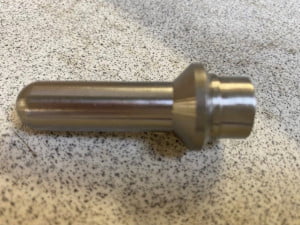CHASE supplies thermowells for corrosive or erosive applications such as Waste to Energy, Incineration and Power Generation. We work to improve mean time between thermowell failures, simplify the replacement process and thus save money and reduce operational disruption.
If you’re running a Waste to Energy plant, Incinerator or Power Plant and you have issues with thermowell failure or you need to replace thermowells outside of planned maintenance, use the contact form below to get in touch.
Please give us some basic information about the temperature of your incinerator and the general nature of the waste being processed and we will provide a recommendation and cost for thermowells that would be suitable for your plant.
In many severe applications thermowells are seen as a consumable item. However, the costs can mount up.
Example: Waste to Energy
Waste to energy plants burn waste at temperatures up to 850°C to 900°C. Some modern plants, in order to completely burn up materials with a higher combustion temperature, achieve temperatures around 1650°C. Such high temperatures convert most metals and glass to inert ash and reduce the waste to less than 5% of it’s original volume.
The temperature of the furnace is critical to the operation of the plant and must be monitored accurately. This means that at least three measuring points are required, and they must be located directly above the flame.
Due to the high temperatures, the unknown content of the waste, the corrosive gases and abrasive ash in the furnace the devices measuring the temperature of the furnace have a short lifespan. The RTDs or thermocouples, used to measure temperature, are protected by thermowells, however some thermowells can have a lifespan of weeks or, in some cases, days.
The economics of waste to energy plants is based on both disposal of waste and generation of electricity. Shutting down the furnace to change thermowells is both expensive and inconvenient. Critical shutdown due to thermowell failure is a major issue for an operator.
Click here to read more about UNPLANNED OUTAGES IN WASTE TO ENERGY PLANTS


What are thermowells for corrosive or erosive applications made of?
Well, that depends on the application!
For many applications stainless steel is the most cost effective and suitable material, however for corrosive or erosive environments more resistant materials are more cost effective.
The issue with thermowells made from inadequately specified materials in a harsh environment is that they quickly fail to protect the temperature sensor inside, leading to wrong or no temperature measurement. Replacing the sensor and the thermowell requires the plant, such as a boiler, to be shut down, leading to loss of production/uptime.
Stellite6 is particularly resistant to erosion and is therefore the material most suitable for harsh environments like the pulverised coal dust supply for power station boilers.
Thermowells can be manufactured in a range of materials, specific to the temperature and the environment of the application. Stainless steel is appropriate for many applications however corrosive or erosive environments require materials such as Alloy600, Alloy800, Monel, Hastelloy, Titanium or other specialist alloys and coatings.
We use Western European material suppliers to ensure guaranteed origin and can provide 3.1 Material Certification giving chemical analysis. They also have the capability to do Positive Material Identification (PMI) testing to ensure genuine supplies and to reverse engineer materials when diagnosing failed components.


